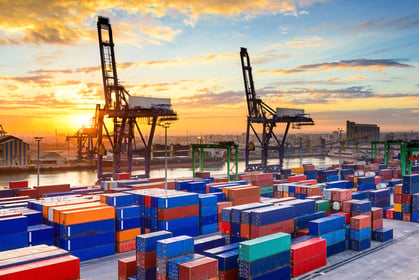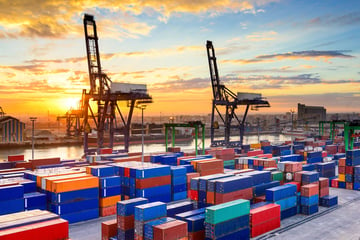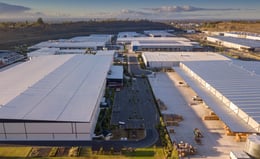Why the Definition of Supply Chain Management Is Changing
Jesse Kelber - May 28, 2020

 Few aspects of the world economy are seeing changes fly at them as fast as those coming at shipping and logistics. With global climate change, political infighting, and the costs associated with transportation in the 21st-century supply chain management, teams are having to scramble to keep up. And if they want to try and get ahead, that’s another story altogether, and it’s a story being told by emerging technology. At first blush, supply chain management (SCM) seems like a fairly straightforward idea—knowing what to order and when, and knowing when the finished product will get to the buyer. And yet, recent upheavals in the shipping world and global uncertainty surrounding things like Brexit and the Coronavirus epidemic have thrown a new light on global logistics—a new light that has forced a change in perspective on just how SCM can be accomplished in today’s world.
Few aspects of the world economy are seeing changes fly at them as fast as those coming at shipping and logistics. With global climate change, political infighting, and the costs associated with transportation in the 21st-century supply chain management, teams are having to scramble to keep up. And if they want to try and get ahead, that’s another story altogether, and it’s a story being told by emerging technology. At first blush, supply chain management (SCM) seems like a fairly straightforward idea—knowing what to order and when, and knowing when the finished product will get to the buyer. And yet, recent upheavals in the shipping world and global uncertainty surrounding things like Brexit and the Coronavirus epidemic have thrown a new light on global logistics—a new light that has forced a change in perspective on just how SCM can be accomplished in today’s world.
Changing Expectations: Consumers Drive the Marketplace
There’s something else sweeping the world economy right now, and it’s called “The Amazon Effect.” This is the fact that consumers can now have their purchases delivered to them in as little as one hour in some locations. Even in more remote areas, delivery can be accomplished in one-two days. This flies in the face of the old norm, when an order could take 3 days to process and another 7-10 to be delivered. With their extensive network of warehouses, multi-level inventory management, and efficient transportation networks, Amazon has forced a revolution in SCM. What many don’t realize is that third-party sellers make up over 80% of sales on the site, and these sellers often rely on Amazon’s infrastructure for logistics support. The advanced analytics employed to streamline this exhaustive network are making their way into the broader logistics world and providers around the globe are benefitting from this distribution.
AI and Machine Learning Come to the Masses
Perhaps some of the most exciting advancements to come to logistics recently have been in artificial intelligence (AI) and machine learning. This technology stands to revolutionize transportation and logistics networks by bringing the power of big data to bear on it. First, we see the Internet of Things (IoT) making inroads into the manufacturing sector. This, in turn, is powering the automation of the underlying processes around the manufacture of consumer goods. That automation and the datastreams coming from production facilities are creating a flood of data, and that’s where the power of machine learning algorithms and AI are making themselves felt. Advanced analytics engines are parsing all of that data, enabling companies to draw actionable insights in near real-time. Those insights allow for quick pivots and shifts in everything from production capacity to shipping routes, which can be optimized for efficiency or even to lower fuel costs, all on the fly.
Transportation Technology Is Arriving Early
Transportation technology conjures up images of self-driving cars and drones, we know. While these technologies are in development, there are others that are nearing operational here and now. Driver safety technologies like lane alert systems that keep big rigs centered in their lane, preventing crashes in the event of a driver nodding off on a long haul, are already in use. And predictive braking systems are at work keeping traffic flowing and shipments moving in the right direction. Delivery drone technology, not self-driving yet, is in the final stages of testing. These drones will make one-hour delivery windows conceivable for even the smallest of service providers in urban environments.
International Regulations Are Tightening
This entry on our list is having impacts both good, and not-so-good, on the logistics industry. On the one hand, rules surrounding working conditions at dock facilities and in warehouses are having a huge positive impact on the health and well-being of the workers at those locations. And regulations that tighten restrictions around shipping containers are cracking down on smuggling operations and keeping supplies and products safe from those who would tamper with them for their own gain. Yet, on the other hand, these same restrictions are raising costs for retailers, who are then forced to pass these on to consumers in the form of elevated prices. A perfect example here is the enforced use of ELDs, or Electronic Logging Devices, in transportation. Intended to keep drivers’ hours to a safe maximum, they are having the effect of causing shipments to be delayed mid-journey should the driver find themselves in the middle of the road when the device forces them to pull over for a rest break.
S&OP Processes Are Evolving
Sales and Operations Planning (S&OP) is the set of processes that enable a company to plan appropriately for upcoming demand spikes, without experiencing a disruption in the flow of goods. As a result of the changing consumer expectations discussed above, demand planning is rising to the top of the process pile. At the same time, product lifecycles are shortening, which is forcing new product lifecycle management processes to be implemented on the fly. Add to all of that the increasing demand for end-to-end supply chain visibility and transparency and you can see that S&OP has its work cut out for it. With the shift to on-demand production, most companies will find that their S&OP processes need a refresh. Real-time data flows stemming from IoT integration and other Industry 4.0 technologies mean S&OP processes are becoming more agile and flexible in order to keep pace.
Emerging Technology Is Powering Each Of These Changes
Every one of the forces discussed here is being powered by the same thing—emerging technology. AI and machine learning come to us from the computer science world and are making their impact felt across sectors. Next-generation ERP and SCM solutions are already available that make excellent use of these technologies, bringing the power of big data to even the smallest of players in the logistics world. These solutions include support for:
- Innovative PLM systems
- Logistics network management
- IoT integration
- AI-powered advanced analytics
- BI system integration
And by integrating all of this powerful technology into one centralized software solution, you’re able to put all that power to work for your logistics network. With the changes happening today, and those in the immediate pipeline, SCM has to pivot and adapt quickly if it wants to keep up. With the increasing globalization of the supply chain and the ever-improving integration of Industry 4.0 technologies, supply chain management needs to become a fully integrated part of the business workflow.
LATEST POSTS
- Understand Circular Economy in The Manufacturing Industry
- How Can Industry 4.0 IT Integration Be Achieved Smoothly?
- The Significance of Order Sequencing in Discrete Manufacturing
- How to improve your Supply Chain Management: The Power of Control Towers
- Optimizing Human Resource Scheduling in Manufacturing: A Technological Approach



